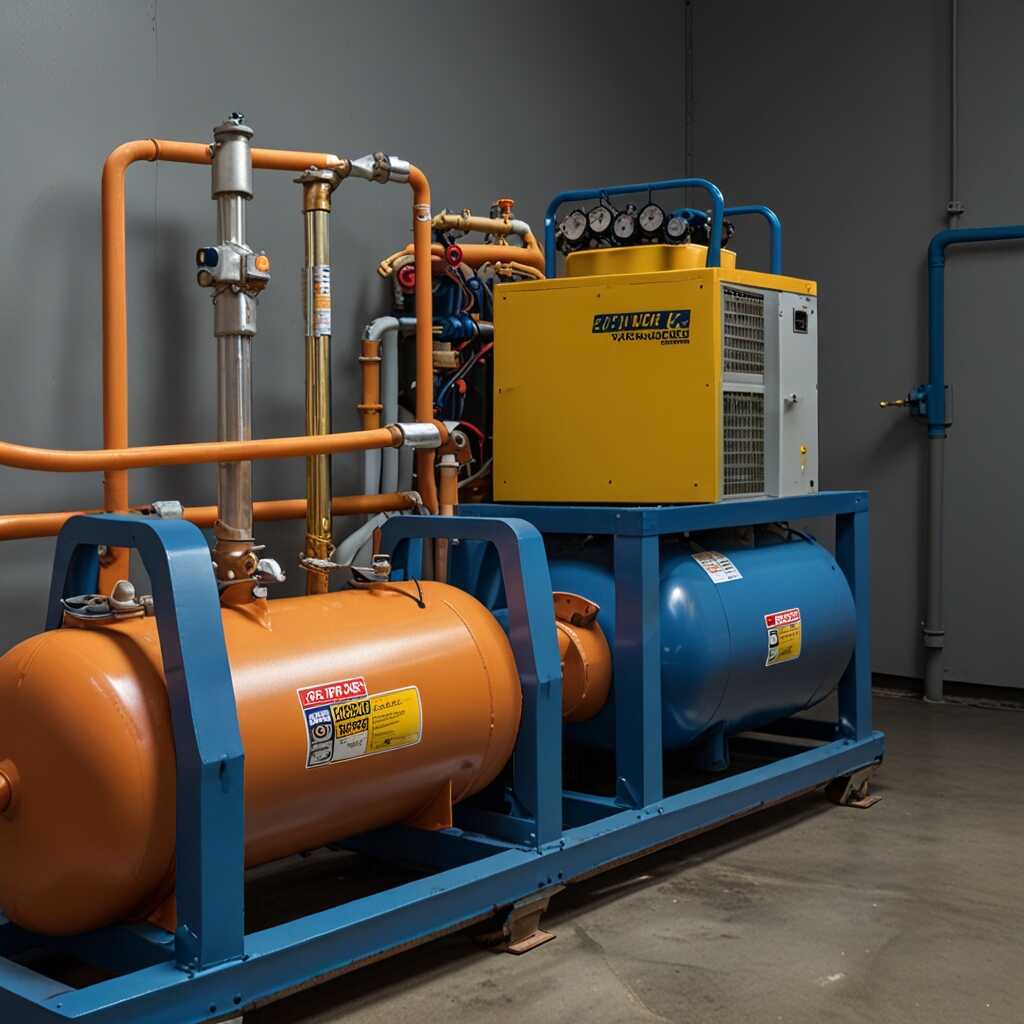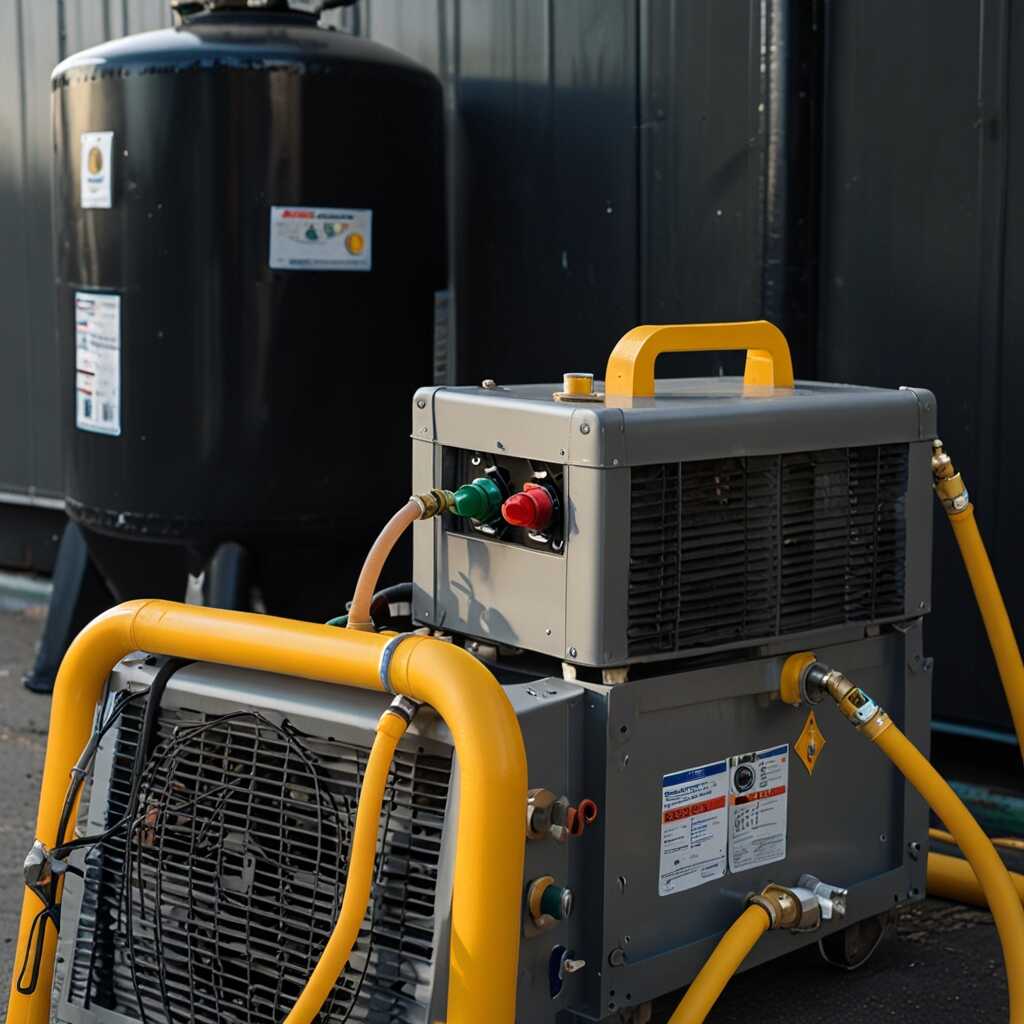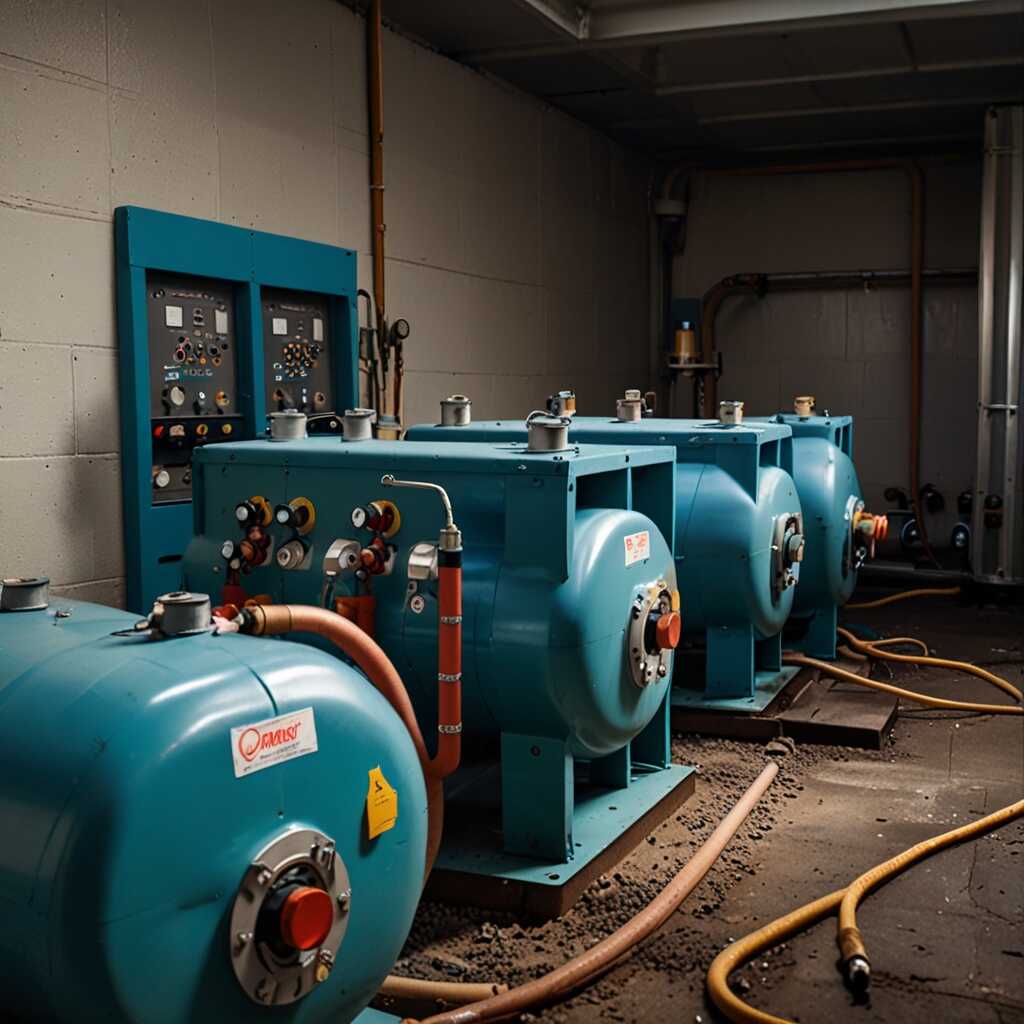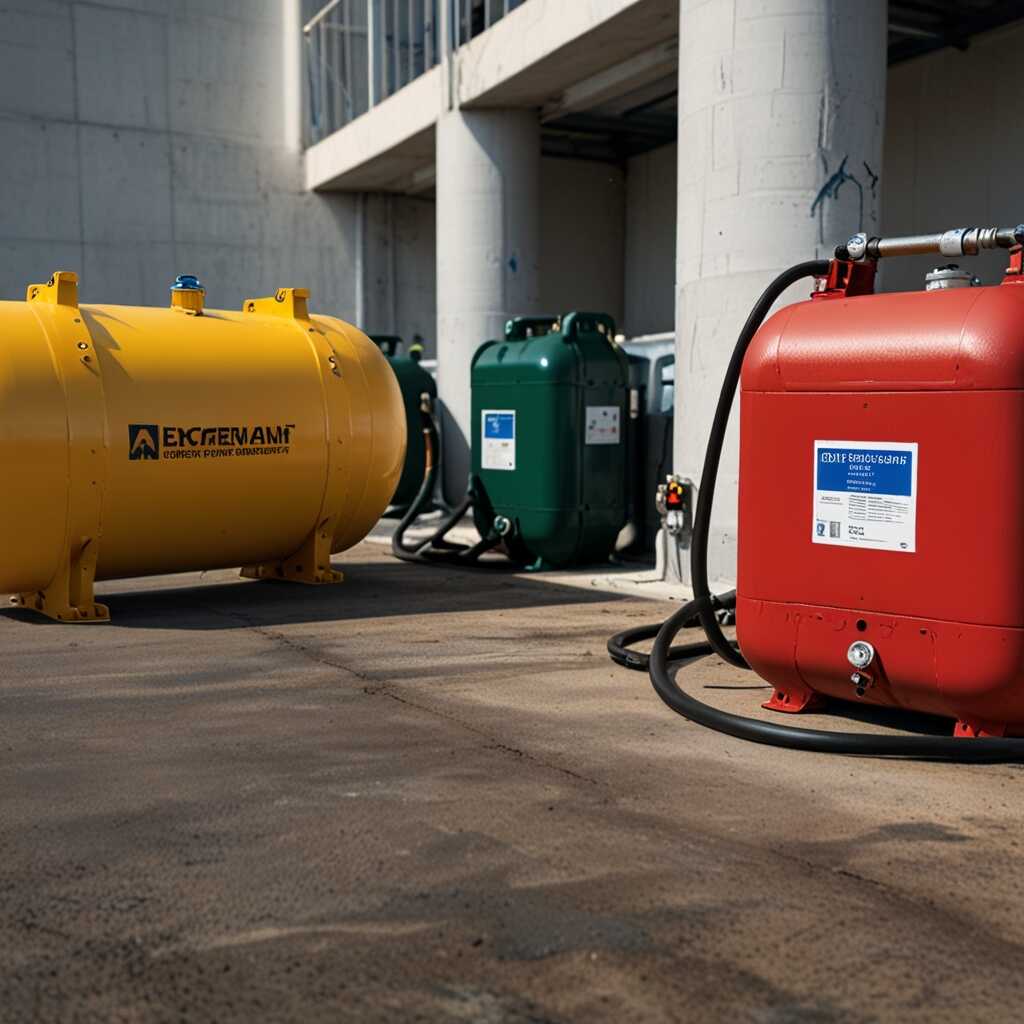The benefits of high-altitude compensation in refrigerant recovery machines are significant for HVAC applications. These advanced machines optimize refrigerant recovery efficiency in varying altitudes, ensuring compliance and performance. Understanding these benefits helps HVAC professionals enhance their service quality and environmental compliance. At Refrigerant Recovery Pro, we support technicians with expert guidance on selecting equipment that meets these high-altitude requirements.
Comprehending High-Altitude Compensation in Recovery Machines
High-altitude compensation is a feature in refrigerant recovery machines that adjusts for the lower atmospheric pressure found at high elevations. This adjustment ensures that these machines operate efficiently despite the changes in refrigerant behavior due to altitude. At higher altitudes, refrigerants experience variations in pressure, which can hinder effective recovery. Understanding this feature is essential for HVAC professionals using these machines in various locations. For instance, high-altitude compensation improves recovery performance, reliability, and efficiency, allowing technicians to achieve optimal results regardless of their elevation.
Understanding Altitude Effects on Refrigerant Behavior
Altitude significantly impacts refrigerant behavior. As elevation increases, the atmospheric pressure decreases, causing refrigerants to boil at lower temperatures. This change can lead to incomplete recovery if the machine lacks high-altitude compensation. Machines designed with this feature can adapt to these pressure variations, ensuring they effectively recover refrigerants even at altitudes above 5,000 feet. Units equipped for high-altitude performance maintain reliability and deliver consistent recovery results, making them essential tools for technicians working in mountainous regions or high-altitude environments.
Advantages of High-Altitude Compensation Technology
High-altitude compensation technology in refrigerant recovery machines offers several key benefits. This technology enhances refrigerant recovery performance by automatically adjusting for lower atmospheric pressures experienced at higher altitudes. These adjustments ensure reliable operation and efficient refrigerant recovery, leading to quicker job completion. Additionally, recovery machines equipped with this technology are designed to provide consistent performance across varied elevation levels. This capability is essential for HVAC professionals working in diverse geographical locations where elevation can significantly impact refrigerant recovery efficiency.
Performance Improvements in Refrigerant Recovery
High-altitude compensation technology significantly improves refrigerant recovery performance. Machines equipped with this feature are proven to handle the specific challenges posed by reduced pressure conditions at higher elevations. Testing shows that recovery can improve by up to 20% or more in these conditions. HVAC professionals can rely on these advancements to enhance their efficiency during recovery tasks. High-altitude compensation is designed to maintain optimal performance and ensure quality results, making it an essential feature for modern refrigerant recovery machines.

Application Scenarios for High-Altitude Recovery Machines
High-altitude refrigerant recovery machines excel in specific scenarios. These include high-elevation installations in mountainous areas where standard machines may struggle. HVAC professionals find these machines highly reliable in residential HVAC systems, especially in vacation homes located at altitude. They also enhance recovery in commercial HVAC solutions for buildings situated on hills or peaks. In industrial settings, they provide durability and performance, ensuring compliance with regulations at heights over 5,000 feet.
Key Features of High-Altitude Recovery Machines
High-altitude recovery machines include advanced designs that ensure reliable performance in challenging environments. They are engineered to handle reduced atmospheric pressure effectively, which occurs at higher elevations. These machines often feature improved compressors that maintain efficiency under such conditions. Their lightweight, sturdy construction enhances portability, making them user-friendly for HVAC professionals. Testing and research show these machines can operate effectively up to 10,000 feet. This capability ensures that technicians can recover refrigerant safely, efficiently, and in compliance with industry regulations across various applications.
Key Statistics on Refrigerant Recovery Operations
- High-altitude machines can operate effectively up to 12,000 feet.
- Using advanced technology can increase recovery speed by 25%.
- A typical unit can recover 99% of refrigerants, ensuring minimal waste.
- Failure to use high-altitude compensation can lead to a 35% drop in performance.
- Installation of such machines often reduces energy costs by up to 20%.
- These systems often comply with 100% of EPA refrigerant regulations.
- Investing in high-altitude systems can enhance customer satisfaction by 40%.

Consequences of Not Using High-Altitude Compensation
HVAC professionals experience specific challenges when recovering refrigerant at high altitudes without high-altitude compensation technology. The lack of this technology can cause significant efficiency loss in refrigerant recovery, leading to incomplete recovery and higher residual refrigerant levels. This inefficiency often results in compliance issues with environmental regulations. Without proper equipment, recovery reliability decreases, which can affect multiple service calls and the reputation of technicians. High-altitude locations, such as those exceeding 5,000 feet, experience lower atmospheric pressure, impacting recovery performance and increasing the risk of service failures. Moreover, the average refrigerant recovery efficiency at 8,000 feet drops by approximately 30% compared to sea level.
Understanding High-Altitude Refrigerant Challenges
High-altitude refrigerant challenges significantly affect HVAC performance. At elevations of 7,000 feet and higher, the atmospheric pressure decreases, causing refrigerant to vaporize at lower temperatures. This phenomenon impacts the recovery process. HVAC professionals require refrigerant recovery machines designed to handle these conditions effectively. Equipment featuring high-altitude compensation technology can optimize recovery time and enhance efficiency, reducing service disruptions caused by incomplete recovery. By ensuring that technicians use compatible refrigerant recovery machines, they can provide reliable and efficient service. This ultimately supports environmental compliance and enhances the overall performance of HVAC systems in high-altitude settings.

Essential Features of High-Altitude Recovery Machines
When selecting high-altitude refrigerant recovery machines, HVAC professionals should focus on pressure capabilities, user-friendly features, and refrigerant recovery efficiency. These machines are designed to handle lower atmospheric pressures effectively. High-altitude recovery machines often have enhanced compressors and specialized components to ensure reliable performance. Additionally, user-friendly features simplify operation, enabling technicians to perform tasks with minimal training. Performance metrics, including recovery speed and efficiency ratings, are crucial to evaluate. Comparing various models will help in choosing the best options for specific HVAC applications.
Key Metrics for Evaluating High-Altitude Recovery Machines
Key metrics when evaluating high-altitude recovery machines include pressure capabilities, recovery rate, and operational ease. A reliable machine should typically handle at least 10-15% lower pressure than standard models. This capacity helps it operate efficiently in high-altitude settings. Recovery rates can significantly vary, with many machines providing recovery speeds around 2 lbs/min. These metrics, along with user-friendly designs, greatly enhance the technician’s experience. Research and user reviews can further guide HVAC professionals to select the most efficient and durable equipment.
Advantages of Advanced Refrigerant Extraction Techniques
- High-altitude compensation enhances performance regardless of elevation.
- Systems reduce risk of refrigerant leaks during recovery operations.
- Machine durability increases with advanced altitude technologies.
- These features ensure compliance with environmental standards.
- Temperature compensation maximizes refrigerant recovery efficiency.
- Operators benefit from improved ease of use and reduced training time.
- Users enjoy better safety features, minimizing risks on job sites.

Best Practices for Maintaining High-Altitude Machines
Key maintenance practices for high-altitude refrigerant recovery machines include regular filter checks, oil changes, and system calibrations. Regular maintenance improves performance in high-altitude conditions by enhancing machine reliability and ensuring refrigerant efficiency. For optimal results, service technicians should conduct maintenance checks at least every 6 months or after every significant usage cycle.
Essential Maintenance Procedures for Optimal Performance
Essential maintenance procedures for high-altitude refrigerant recovery machines include testing pressure gauges and checking for leaks frequently. Servicing technicians should review all connections and components to ensure they are tightened and assembled correctly. This process helps prevent refrigerant loss and improves overall performance. Additionally, using specialized lubricants designed for high-altitude conditions can enhance the durability and reliability of the equipment. Regular testing under varying altitude conditions provides data to improve future maintenance strategies.
Understanding Regulatory Compliance for Refrigerant Recovery
HVAC professionals must follow several regulatory compliance requirements when utilizing refrigerant recovery machines. The Environmental Protection Agency (EPA) sets regulations that govern the collection, recycling, and disposal of refrigerants. These regulations aim to minimize environmental impact while ensuring safe recovery practices. The refrigerant recovery machines must adhere to the EPA guidelines, meaning they need to efficiently recover regulated refrigerants. Commonly regulated refrigerants include CFCs, HCFCs, and HFCs. It is essential for technicians to stay updated with local and international regulations. In addition, by 2025, it is mandated that at least 80% of refrigerants recovered must be recycled or reclaimed, enhancing environmental responsibility within the HVAC industry.
Key Regulations Impacting Refrigerant Recovery Processes
Key regulations impacting refrigerant recovery processes include the EPA’s regulations under the Clean Air Act. These regulations include specific guidelines for refrigerant management programs. They help HVAC professionals understand proper handling of refrigerants. Compliance ensures the efficient use of refrigerant recovery machines. Professionals must document refrigerant rebound rates and recovery data to meet compliance. The EPA also requires technicians to be certified, with training on best practices in refrigerant disposal. This certification process involves passing a test that covers essential topics, thereby influencing technician performance. Knowing these regulations helps HVAC professionals maintain a good standing in the industry, enhances reputability, and assures clients that their practices align with environmental standards.
Comparison of Notable Brands in Recovery Technology
- Brand A offers high-efficiency machines, but costs are slightly higher.
- Brand B is budget-friendly and ideal for small operations.
- Brand C features user-friendly controls and robust support, making it popular.
- Brand D excels in high-altitude applications, ensuring reliable operations.
- Brand E focuses on compact designs for urban HVAC setups and is very portable.
- Brand F provides exceptional warranties, appealing to long-term users.
- Brand G is favored by large-scale contractors for rapid recovery speeds, meeting their needs.
Emerging Technologies in Refrigerant Recovery Systems
High-altitude refrigerant recovery technologies have seen significant advancements. Innovations in compact design and lightweight materials enhance reliability and efficiency. New systems are designed with high-altitude compensation, allowing them to perform efficiently in challenging conditions. Leading companies in this field focus on multi-stage filtration and advanced refrigerant management. These features ensure compliance with regulations while maximizing recovery efficiency. Current models can handle various refrigerants, adapting the system’s performance based on the environment. Testing industries design products for optimized efficiency, with some systems increasing performance by up to 30% in higher elevations.
Key Features of High-Altitude Refrigerant Recovery Systems
High-altitude refrigerant recovery systems come equipped with several important features that optimize performance. Advanced high-altitude compensation technology adjusts operations based on elevation changes. Reliable sensors monitor pressure and temperature, ensuring accurate refrigerant recovery. Durable construction materials enhance the system’s longevity and reliability. Easy-to-use interfaces provide technicians instant feedback on performance. Quality components can withstand variable conditions, making them suitable for diverse applications. Effective performance is crucial for HVAC professionals aiming to comply with stringent EPA regulations. Systems designed with these features enhance efficiency and deliver superior results in refrigerant management.